In a market overflowing with hype – and dominated by a singular narrative – converting artificial intelligence (AI) enthusiasm into service execution is now fundamental for future managed service provider (MSP) success in Australia.
The why is self-explanatory for an ecosystem eager to maximise the benefits of emerging technologies. But the how is still up for debate as forward-thinking partners incorporate AI into both internal and external strategies.
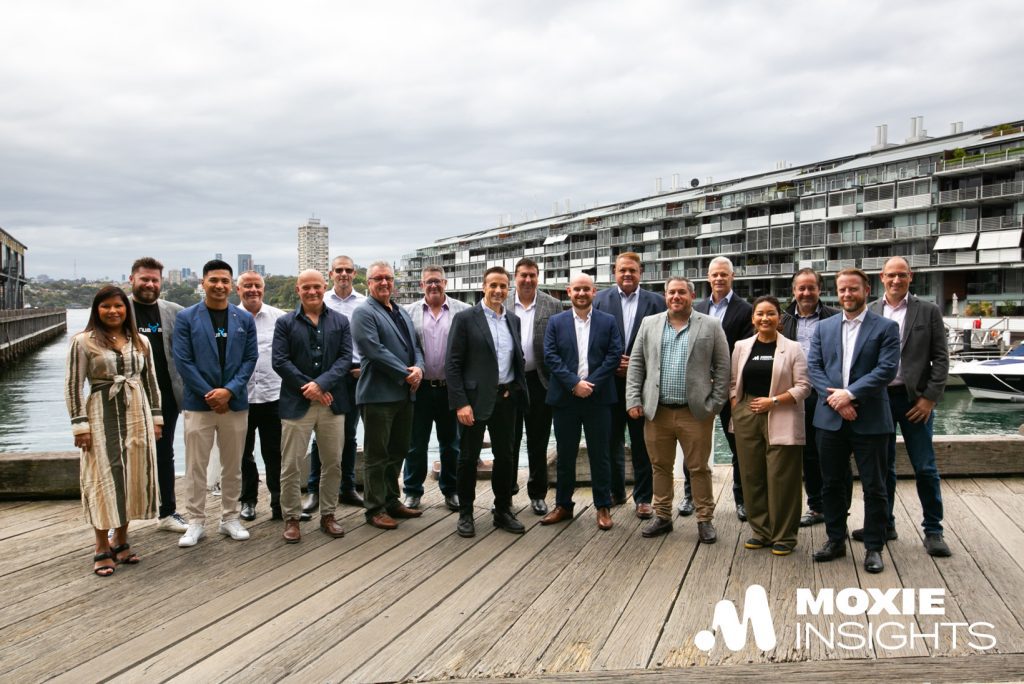
Internally, to enhance efficiencies, overcome skills shortages and lower operational costs. Externally, to strengthen solution offerings, improve customer service and power new revenue streams.
This Executive Roundtable – in association with Moxie Insights and LogicMonitor – deep-dived into how MSPs can leverage AI to accelerate business growth in Australia.
Key discussion points included:
View Moxie Insights – Executive Roundtable in photos:
On occasions – before the voice recorder is switched on – executive interviews start with a quick alignment on background facts.
Often benign context that involves confirming point A and clarifying point B. Nothing more than simply getting the journalistic ducks in a row.
Sometimes however, the pre-chat creates a trigger point for the entire conversation.
“How long have I been at the company?” asked Tian Beng Ng. “Well, that’s actually funny because my eldest son is turning 23 but I’ve been at Dell for 26 years – so I guess that’s the benchmark.”
More than a quarter of a century. That’s three Singapore Prime Ministers, five US Presidents and eight British Prime Ministers.
“It’s been a long time and a privilege every step of the way,” said Tian Beng, in recognition of his upcoming departure from Dell Technologies.

Summarising a career spanning over two decades is no easy task, having first walked through the company office doors in Singapore. Riding that corporate rollercoaster of highs and lows – from Y2K to GFC and now AI.
The time was June 1998 and a young Tian Beng had just finished his first corporate sales role at Sony. Fast forward to today and the charismatic leader will leave the Dell business as Senior Vice President and General Manager of Channels across Asia Pacific and Japan (APJ).
“I can categorise my leadership style in two ways,” he shared.
“Number one is ownership, that is very important and something I truly believe in. Ownership for me personally is leading from the front – a good leader has to be seen driving forward with their team members.”
Akin in many ways to the age-old leaders on the front line and down in the trenches, gallant tales from hundreds of years ago that still shine as examples of motivation in the corridors of corporate power today.
Less of the emails, video calls and WhatsApps – more of the face-to-face interaction.
“That’s why I travel so frequently across different countries and regions to spend time with team members and channel partners,” Tian Beng added. “Put in the effort to visit because you always need to be seeing and engaging, not just sitting down and listening to people.”
Secondly, understand the importance of people.
Not in the surface-level sense that is good for marketing, rather putting in the groundwork to understand the individuals behind the company, the product or the deal.
“That’s why I spend a lot of time with people, whether they are our team members or our partners,” Tian Beng added. “The success of any leader is dependent on your team members and on the relationships that you hold with customers and partners.”
For Tian Beng, both attributes are interlinked. Ownership cannot be achieved without the support of those around you while people are best heard when you meet them in the field.
“When you’re out there you constantly learn on the job by engaging with people,” he noted.
“You don’t need to learn from a senior person, you can learn from anyone that is out there in the field because they see and experience many things that you may not as a leader. Learning takes place on all levels.”
The fuel for such energy is being in a state of constant curiosity. Whether face-to-face or head in a book, be open to feedback and new ideas.
“I also learn a lot from attending leadership development programs and I’m always reading and speaking to people,” Tian Beng said. “There’s never a time when you know everything and if you ever think that is the case then that will unfortunately be your downfall.”
Leading from the front
Tian Beng’s first true taste of the market action came during his time looking after global accounts during the early 2000s. Clients included Citibank, General Electric, Microsoft and HSBC.
Natural progression continued into South Asia and Korea as Vice President and Managing Director between 2007 and 2013, having first taken over Singapore and Brunei markets.
“One of my most memorable and proudest achievements was our work in South Asia and Korea,” he explained. “We actually set up the business of Dell in many of those countries, such as Indonesia, Vietnam and the Philippines.
“We created the legal entities of the companies, hired teams and built those markets from scratch. It gives me a great sense of pride to continue watching Dell progress in those emerging countries, growing from starting out to market leader.”
The same impact of Tian Beng and his team extended to Bangladesh, Nepal and Myanmar, all of which were 100% channel and powered by a strong base of local partners.
“I have many fond memories of visiting buildings in lots of different cities across South Asia searching for offices, as well as hiring team members locally,” Tian Beng recalled. “They have all rapidly built up since those early years.”
Following that, an 18-month assignment as Vice President of Greater China and Korea was also fulfilled, ahead of one of the most seismic shifts in technology history.
The acquisition of EMC by Dell for $67 billion in USD sent shockwaves across the market. And as the ink dried on the historic merger in September 2016, Tian Beng prepared to take the reins of the combined partner ecosystem regionally on November 2016.
“My second most memorable moment was setting up the Dell EMC partner program,” he detailed.
“Both vendors obviously had their own partner programs but we had to start from scratch and those were challenging times. We had to listen to a lot of feedback from the partner community and work with the global team to implement the changes and launch the program.”
Building a global program to service thousands of partners from the ground up was one thing however, driving home the message of change to the masses was another matter entirely.
That involved putting in the hard yards for Tian Beng and his newly formed channel team in APJ – leading from the front, winning mind share and securing commitment.
“It was a great success and aligned to the mantra of being simple, predictable and profitable,” he said.
“Launching the Partner Advisory Board [PAB] in 2017 was also a highlight, we started with about 30 partners attending our first meeting in Perth, Australia.
“From day one, it was important that members realised the value because if they didn’t, they simply wouldn’t attend. We’ve engaged several times every year and aside from the great relationships built, we’ve received a lot of valuable insights and feedback from the channel.”
Leading a channel requires finesse. Taking command of a network of thousands of partners – notably of different sizes, different types and different geographies – through indirect influence is a skill that must be continually honed.
There’s no direct control here, partner organisations are independent and have the power of choice and freedom in vendor selection. They can pivot at any moment and switch lanes; they can pull in contrasting directions without warning.
“This is absolutely true – all partners have a choice and all customers have a choice,” Tian Beng acknowledged. “Partners can select which vendor they want to work with and that’s always been our responsibility to create that mindshare in the market.
“It requires constant engagement and forms part of a relationship that is built on trust. I engage with many senior partner executives and my objective is to build trust as a first priority, then we can talk about partnerships.”
In other words, there’s no place for command and-control leadership. The “I leader, you follower” approach inevitably ends in failure.
According to Jay A. Conger – formerly Professor of Organisational Behaviour at the London Business School and now a Fortune1000 Executive Educator – exerting influence without authority requires a healthy dose of lateral leadership.
This counts among a leader’s most essential skills, and comprises a “constellation of capabilities” – from networking and coalition building to persuading and negotiating.
“Trust with the community is everything,” Tian Beng added. “Once you build trust, you can execute a lot of initiatives because they just become easier.
“And consistency is an important part of that. Having a strong and stable team of leaders building relationships in each country is an invaluable asset.”
Proud achievements aside, Tian Beng was quick to accept that high performance comes with high pressure. Mirroring the ethos of Michael Dell – and his Play Nice But Win mantra – standards within the company are high and expectations are even higher.
“There’s high standards at Dell which is very similar to other technology companies,” Tian Beng shared. “There’s nothing unique to Dell in that sense but that expectation is always there.”
On high performance, take the All Blacks as a case study – one of the most successful sporting teams of all time and three-time Rugby World Cup champions.
They learned to treat the pressure of expectation as a “privilege” and understood the value of ramping up intensity during training to execute their routines, in a “skills ladder” approach. In other words, practice pressure.
As a strong advocate of ownership, perhaps it’s unsurprising that Tian Beng thrives in such scenarios.
“The pursuit of high standards is one of the things that I have loved most in my roles, otherwise I wouldn’t have stayed for 26 years,” he stated. “These conditions motivate individuals to improve and excel because it creates good character.”
On day one of joining the business in 1998, this was primarily a PC company with bold ambitions. Now in 2024, the organisation has morphed into an industry behemoth with end-to-end capabilities across the entire technology stack.
“We have totally transformed,” Tian Beng said. “Never in my wildest imagination could I have envisaged that.
“We’ve been very blessed to have Michael as the founder and CEO of the company but despite the company size being dramatically different, the culture has not changed. The scale is huge yet the leadership principles have remained constant throughout the years.
“That’s why so many long-timers have stayed at Dell, they have enjoyed that journey.”
Power of people, contributing to the community
In theory, spearheading a team of hundreds and an ecosystem of thousands should offer little room for extracurricular activities. Alongside his “day job”, Tian Beng has many “night jobs” as well.
One of which is Singapore Site Lead, a role which resulted in the launch of a Global Innovation Hub (GIH) in the city-state during 2021, backed by an investment of $50 million in USD and the creation of more than 160 local job opportunities.
As the first-of-its-kind innovation centre situated outside of the company’s global headquarters in the US, the GIH is designed to accelerate research and development (R&D) in key areas such as cyber security, artificial intelligence (AI), edge computing and supply chain analytics.
“I’m very passionate about making Singapore an attractive destination for companies to do business,” Tian Beng said. “There’s so much potential in Singapore and encouraging Dell to bring more global functions into our country was a very proud moment.”
Ensuring Dell is well-represented in the local community has been a personal and professional ambition of Tian Beng for many years, evident by his commitment to joining industry bodies and associations.
Namely the serving of many leadership positions – such as Vice-Chair, Secretary, Treasurer and Councillor – in the Singapore IT Federation and Singapore Manufacturing Federation.
“Contributing back to the community beyond technology is also very important,” Tian Beng detailed.
Tian Beng has been sponsor for the company’s engagement with adopted charities in Singapore for over 10 years, working closely with MINDSG which is one of the nation’s largest and oldest social service agencies.
Founded in 1962, the organisation provides persons with intellectual disabilities (PWIDs) and their families with quality services across their lifespans through strong support from various funding bodies, the community, corporations and individuals.
The work of Tian Beng and his team in this space has been recognised by the National Volunteer And Philanthropy Centre (NVPC) for three years running.
“Being honoured as a champion of good is recognition for how much the team has contributed back to the community in Singapore,” he added.
Representation with WorkWell Leaders is another passion, Singapore’s first non-profit that is singularly focused on building a community of CEOs and leaders across public, private and people sectors to highlight well-being as a strategic priority for their organisation.
“I believe that much more needs to be done to drive awareness in the area of mental wellness,” Tian Beng advised. “Removing that stigma in the workplace remains a top priority, which can be achieved by encouraging companies to adopt policies that address mental wellness in Singapore.”
Leaving a legacy behind, looking ahead
In a direct message to the channel community, Tian Beng displayed “gratitude” for many years of partnership – a heartfelt thanks also extended to his own team of leaders across APJ.
“First of all, I definitely want to ensure that all of the great work carried out over the years with our partner community will continue,” he said. “I’m confident that will happen with the new go-to-market changes.”
Manish Gupta will assume leadership of APJ channel engagement, strategy and development, in addition to Alliances sales execution. Channel sales teams in APJ will now report into their country sales leaders, with “tight connection” to Gupta.
“The channel is set up for great success going forward and partners will benefit from working closely with local channel and country leaders, together with Manish,” Tian Beng added.
“I have witnessed first-hand the transformative power of technology and the dedication of our team and partners to make a positive impact on the world. The future is bright and I am confident the next generation of leaders will continue propelling Dell and our partners to even greater heights.”
Having supported a smooth transition, Tian Beng will leave the business in December 2024 to pursue other opportunities.
“I’m definitely very enthusiastic about staying within the technology industry,” he confirmed. “I’m exploring other opportunities and will hopefully have the chance to engage with many partners and customers in the future.”
Today, the market is messy – a spaghetti junction of technologies and strategies intertwined in a state of disorganised chaos.
Thousands of products raining down on thousands of businesses, seldom in sync and rarely right fit. No budget to blow the cobwebs away and no blank canvas upon which to create a harmonised vision.
That’s the corporate crossroads upon which many organisations are currently stationed at in Australia, whether buyers or sellers of IT.
“Just think of the convergence taking place in our industry across the entire ecosystem, whether that be corporate convergence or technology convergence,” observed John Milionis, Director of Channel and Distribution across Australia at Fortinet.
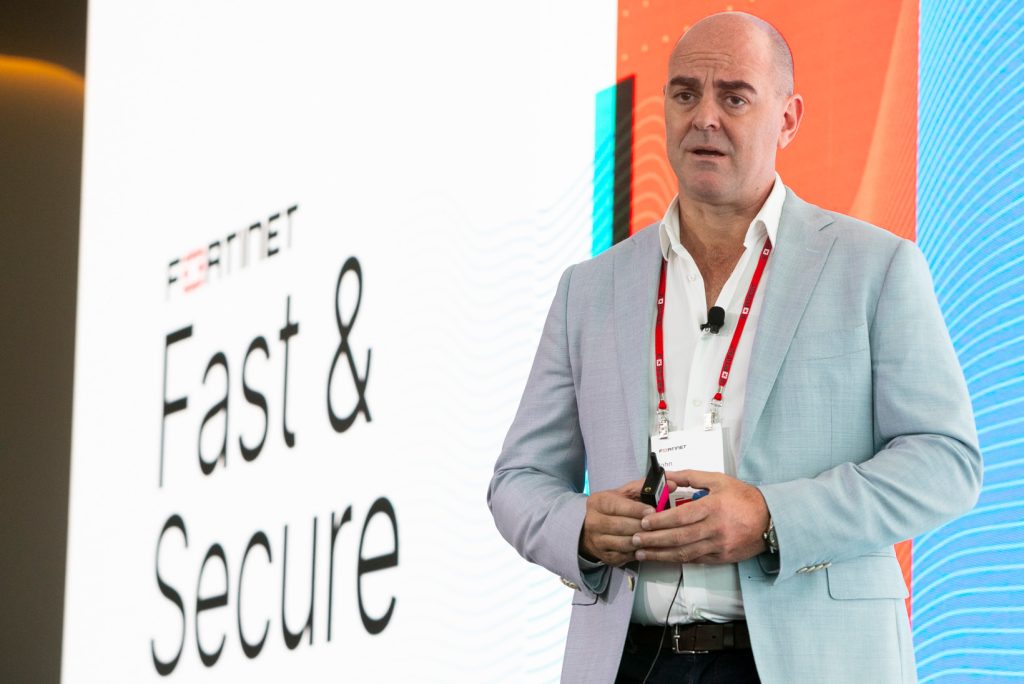
“This is a complex ecosystem and everyone has the same mandate – to grow their business. Whether that’s a partner business, our obligations to shareholders as a vendor or end customers in the private sector – the goal is to increase revenue and profits.”
Cutting through corporate convergence
In the corporate space, mergers and acquisition (M&A) activity is returning to “rampant” levels with local dealmakers armed with greater certainty and confidence to transact.
According to PwC, one-third of companies are planning to make three or more acquisitions during the next three years, with early signs of an upswing in deal activity already underway in Australia.
This has been propelled by further capital recycling, public-to-private deals and foreign investment, as well as an increased volume of private capital investment given the “staggering levels” of dry powder available.
The Australian M&A Outlook 2024 reported that deal activity slowed in 2023 but was sustained by all the usual suspects listed above. Overall, 1,565 deals were announced locally in 2023 – down from 1,773 in 2022 – while publicly disclosed deal values reached $70 billion in USD, up from $65 billion in 2022.
During the past year, significant deal activity occured across several sectors in Australia, notably in consumer through SILK Laser and Wesfarmers, plus Kirin and Blackmores.
This is in addition to BHP and Whitehaven in mining, Honan Insurance Group and Marsh in financial services, as well as APA and Alinta Energy’s Western Australian business in energy.
“As one organisation acquires another, that means the acquisition of separate technology stacks,” said Milionis, speaking on the sidelines of Fast & Secure 2024 in Sydney. “The impact of this is that IT is now inheriting so many different environments with so many different vendors and the relationships that come with that.”
Complex IT environments are not exclusive to end-user organisations however, with the ecosystem also in the midst of extreme convergence from an M&A standpoint.
According to Moxie Research, 73% of Australian partners are currently engaged in M&A activity in one way or another.
Most are actively looking to acquire (37%) which is reflective of an urgent need to build technical expertise in cyber security, data and cloud solutions.
Only a small section of the channel is actively looking to sell (9%) while the rest remain open to conversations to either sell or acquire (27%) – this group will be persuaded by the quality of the offer on the table.
Based on Moxie Research – published via Business Insights: Australia 2023 / 2024 – a total of 87 partner M&A deals were completed during a 15-month period in the local market, from 1 August 2022 to 31 October 2023.
That equates to one partner M&A deal approximately every five days or 126 hours in Australia.
Cyber security was the primary technology expertise acquired in 19 of those deals (22%) with the bulk of activity driven by large-scale consultancy firms and global system integrators (GSIs).
“So many roll-ups are taking place,” Milionis added. “CyberCX is rolling up companies, Orro Group is rolling up companies, Brennan IT is rolling up companies, Tecala Group is rolling up companies, Telstra Purple is rolling up companies. And so on and so forth.”
Ending by completing one hand of finger-counting, Milionis’ point was resounding – “there’s just a multitude of corporate roll-ups in Australia”.
“Partners are rationalising and it’s not only vendor selection, it’s as simple as cleaning up shop to create synergies between the acquisitions made,” he noted.
For many, that includes the preferred process for streamlining product portfolios and how best to combine multiple customer relationship management (CRM) systems. This is more than simply a spring clean, rather a full-scale house in order project.
“We’ve acquired a cloud practice or a SASE [secure access service edge] practice but how do we combine that with our current business?” Milionis continued. “How do we align those offerings and which vendors will come on that journey with us?
“That’s the first element of conversion and we’re in that phase now. Then it comes back to return on investment and cost of ownership for partners because it’s very difficult to win a deal out there today.”
In the context of the ecosystem, Milionis highlighted that an active corporate market is creating two choices for partners specific to vendor selection – point or platform.
“Partners can continue to work with point vendors that are best-of-breed in a particular subset,” Milionis explained. “They can benefit if they back a particular vendor and grow very quickly – they might be one of five or six partners working with that vendor who has skin in the game.
“But as soon as that gets proven out, all of a sudden the competition intensifies and that’s when they can shift to more established vendors with a platform.”
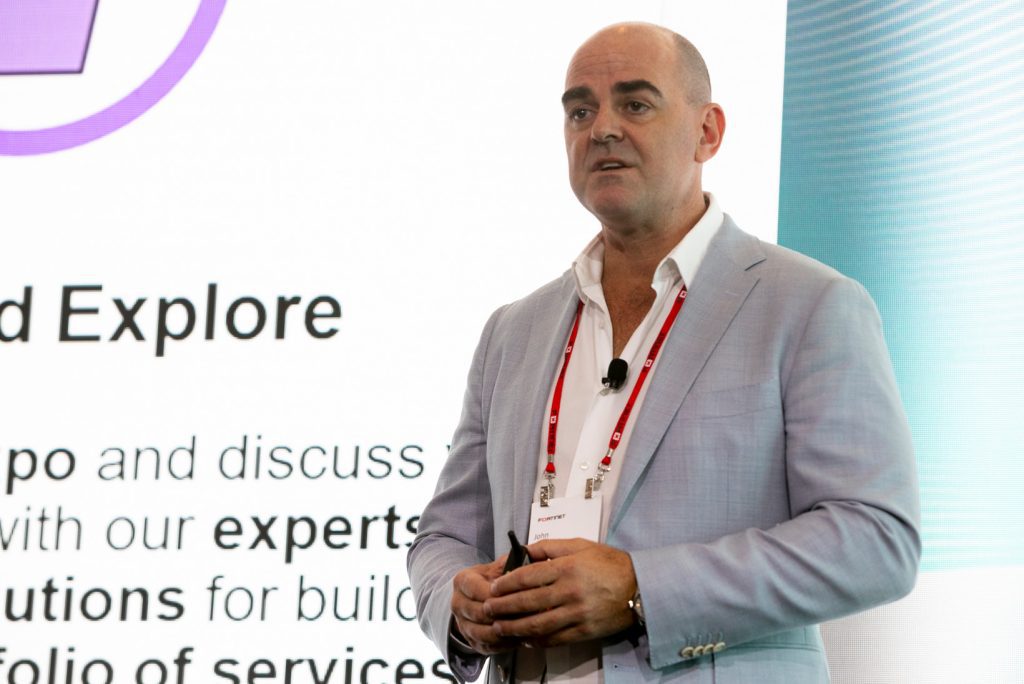
Problem is, every vendor is now penning a platform story, “converging east and west” in the pursuit of growth. From the data centre, through the network, out to the edge and into the cloud – end-to-end capabilities is now captivating the ecosystem.
“Absolutely, every vendor is saying this,” Milionis acknowledged. “The challenge for partners is selecting vendors carefully which is why we invite and welcome critical assessment of our platform.
“We stand behind it but yes, interrogate it, play with it, try to break it and tear it apart. Satisfy yourself that it’s a genuine platform so that your technical organisation has the belief and confidence to go-to-market with this, which in turn will pass onto your sales organisation.”
Transforming through technology convergence
To understand the impact of technology convergence in Australia, Milionis recommended first starting at the end customer to assess evolving enterprise requirements.
“Every customer wants two things,” he stated.
“Firstly, to reduce risk. And their risks are many because it’s not only cyber risk that is of concern – technology risk, IT risk, competitive risk, employee risk, innovation risk etc. There’s not one CEO or CIO that doesn’t wake up every day and ask, where are all the risks in the business?”
Secondly, organisations are motivated to reduce costs.
“Think about the public sector, lots of budgets are under pressure,” Milionis shared. “We’re seeing that play out across the country at federal and state levels.
“Same in the private sector, we’re in a low GDP [gross domestic product] environment and many sectors are going through tough periods, just look at retail, wholesale, construction and manufacturing as examples.”
According to Moxie Research, 50% of organisations cite cost control and expense management as a top strategic priority during the next 6-12 months in Australia.
Achieving that goal will be dependent on a company’s ability to modernise legacy technology stacks and reduce technical debt, an activity which is dominating 38% of CIO agenda items nationwide.
Continuing down this path, 38% of organisations are committed to redesigning business processes, with more than a quarter (26%) already underway implementing new systems and architectures.
“They’ve got complex IT stacks and a complete mismatch of maturity profiles. Different vendors carrying a significant amount of risk because technology A comes out in December 2024, technology B comes out in September 2025 and technology C in February 2026 – it doesn’t give them a chance.
“So, how can they reduce risk and reduce costs? They can achieve that through convergence.”
In other words, a strong desire to do more with less.
Through a platform approach, Milionis said Fortinet is showing up in market to have that conversation with organisations aligned to a three to five-year strategic plan.
“An enterprise business might have multiple partners in the chain providing lots of different technologies,” Milionis explained. “Our recommendation would be to consolidate that around a particular partner that can go on the journey with you.”
Based on Moxie Research – which surveyed 251 IT decision-makers in Australia during February 2024 – 39% of organisations will consolidate the number of outsourcing partners in projects during the next 6-12 months.
This comes as 50% of businesses question pricing models from the channel and tighten spend in the face of economic headwinds – 45% of which are now also demanding increased levels of ROI on strategic initiatives.
The downstream value of consolidation for the ecosystem is through increased revenue and services opportunities for partners capable of tackling such maturity mismatches.
“Start by helping customers knock down different IT siloes and de-risk their environments,” Milionis advised. “Having different parts of the estate managed by different partners creates challenges and obvious finger pointing – that’s real.”
Instead, the more services a customer can procure directly from one platform vendor, the more improved the commercial outcome can be in return. This can then be directed back up the supply chain to partner and vendor.
The message to partners is one of consolidation. Milionis said Fortinet has “strong incumbency” in the firewall industry with almost 40% market share globally, generating “huge amounts” of telemetry and data in the process.
“Many partners built their business on firewalls and have been very successful,” he added.
Following that, the second wave of SD-WAN also yielded benefits for early adopters in the ecosystem which has since morphed into SD-Branch as a third wave of industry innovation. Now SASE is the play as the fourth wave.
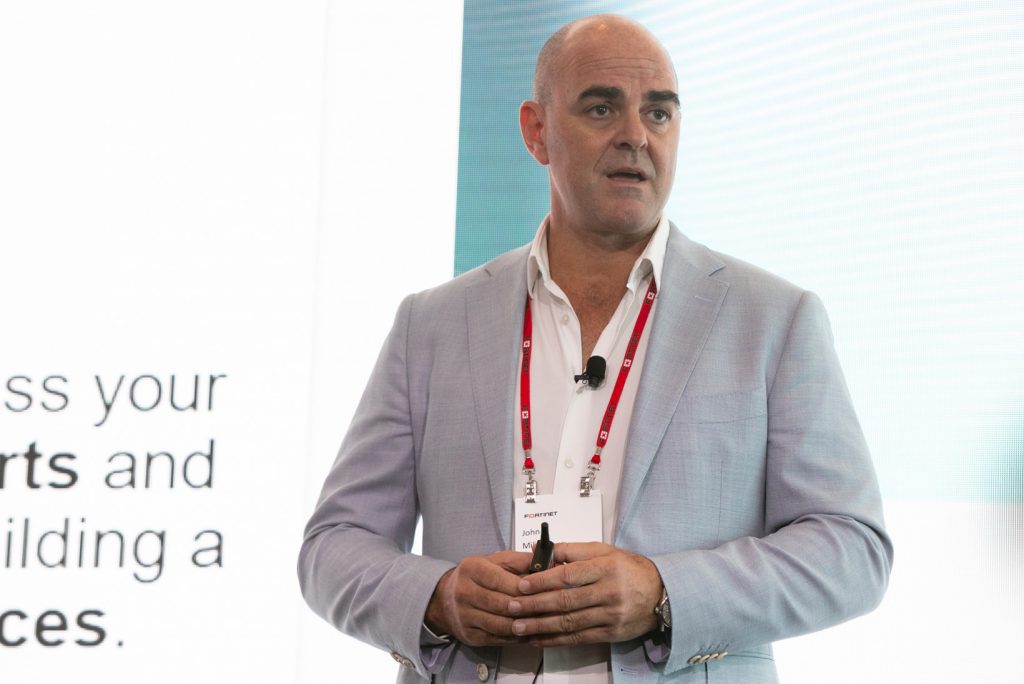
“We’re a challenger in SASE,” Milionis accepted. “We have good incumbency in some areas and good adjacencies in others.
“Partners can join our journey at different parts because it’s not all-in or binary. If a partner has never done firewall, that doesn’t mean they can’t pivot into SASE.”
With many partner businesses built on point solutions, Milionis advocated the benefits of expanding beyond core offerings to accelerate market growth.
“I would urge partners to make that assessment because it can be a big differentiator,” he recommended. “An endpoint specialist that is just an endpoint specialist will reach decelerated growth and intensified competition. When that happens, what’s next?”
Entering enterprise territory, powered by partners
A market undergoing extreme convergence at corporate and technology levels represents fertile ground for Fortinet expansion into the enterprise segment. In a sense, this is untapped territory for the vendor.
“We have a very strong share in the corporate mid-market and there’s still huge amounts of growth to grab in that space,” Milionis qualified.
“But based on the key themes emerging, customers want to do more with less in the large enterprise market. Those funding envelopes are getting smaller which is why technology stacks are being converged.”
While definitions vary on the exact make-up of the enterprise market in Australia, Fortinet follows a simple method based on seat size. Organisations housing up to 10,000 employees fall into the enterprise category while anything above is considered very large enterprise (VLE).
“Both represent natural sweet spots in terms of our platform given the amount of complexity at the top end of town,” Milionis added.
Success in the enterprise will hinge on an engaged and influential base of strategic partners. That can be either established players in this segment or challenger brands seeking to disrupt the status quo.
“We won a VLE opportunity recently in which an existing partner was in that account but didn’t think of us as being a suitable option for this particular requirement,” Milionis said.
“The customer went through the process and it was evident that Fortinet was absolutely deserving of a seat at the table. That’s when the partner perception changed of us in the enterprise.”
In addition to changing the hearts and minds of partners through education, Milionis is also tasked with bringing the ecosystem along for the ride.
“We’ve got great references in this segment of the market at a global level involving some very iconic brands,” he highlighted. “It’s on us to give partners the confidence that we also deserve a seat at the enterprise table domestically in Australia.”
Global customer references span Toyota, Radisson Hotel Group and Siemens among others. Local use cases include James Cook University, Bakers Delight and Pacific National.
From being challenged as a mid-market incumbent to being a challenger in the enterprise, a mindset shift is required at all stages of the supply chain.
“Our job is to be clear and transparent with our partners and work in lockstep,” Milionis said. “That means no two-legged meetings – it has to be four-legged meetings with Fortinet and the partner on every occasion because strategy is critical in those large enterprise accounts.”
In establishing a unified front and removing any gaps at the customer level, Milionis is spurred on by the achievement of one overriding goal in 2025 and beyond.
“To be the most reputable channel business within the secure networking space in Australia,” he confirmed.
“If I had used the word ‘repatriation’ three years ago, I would have been labelled as a data centre bigot.”
Allan King sat back, shook his head and forced a half smile.
On occasions, the cloud conversation has mirrored today’s society – in which alternative views have often been chastised rather than challenged.
Up in the sky, those quick to assign dinosaur tags and brand considered argument as outdated thinking. Down on the ground, those ignorant to change and committed to scaremongering.
All up, a complete absence of intellectual debate and spirited disagreement.
“The cloud pendulum has swung – as it always does after the bright, shiny new thing has been swallowed – and has landed somewhere in the middle,” said King, speaking as Managing Director of Infront Systems.
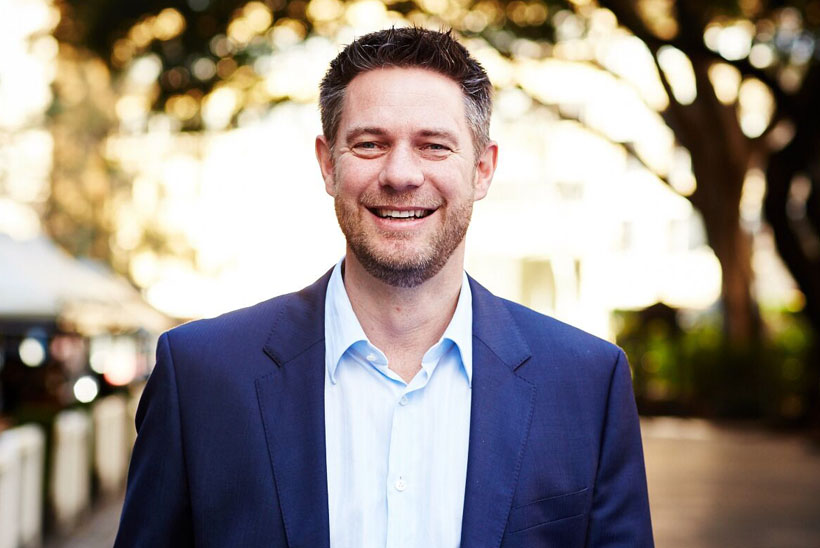
“Three years ago, we were a big Microsoft partner but given our history in the infrastructure space, that would have been our label. But now, the industry has evolved into a workload conversation. Is this workload fit for cloud? No, then run it on-premises. Yes, then build it for cloud and run it that way.”
In launching and leading Infront – a Canberra-based system integrator and managed service provider that entered the market in 1998 – King is driving a wedge between two extreme ends of the argument.
“Customers are now saying that they need to repatriate workloads because it’s costing too much, this is becoming a commercial decision based on price,” King added. “It was never fit for purpose in the first place and should never have been migrated.
“The promise was that cloud was simple and cheap. We talk to a lot of customers and are quick to debunk the industry saying of, ‘you only pay for what you use’. Actually, you pay for what you deploy.”
According to Barclays CIO Survey 2024 findings, 83% of enterprise organisations plan to move workloads back to private cloud from public cloud. This data point has been frequently cited by Michael Dell – CEO of Dell Technologies – and branded as “not surprising”.
Supporting this position is IDC, which recently reported that 80% of businesses expected to see some level of repatriation of compute and storage resources during the next 12 months.
“We started to see repatriation from the moment public cloud was mainstream,” noted Natalya Yezhkova, Research Vice President at IDC. “There’s always some activity around repatriation, and the level of activity isn’t dropping off.”
Offering an alternative viewpoint is Gartner however, which expects public cloud end-user spending to eclipse the one trillion dollar mark before the end of this decade.
The analyst firm documented that worldwide end-user spending on public cloud services is forecast to grow 20.4% to total $675.4 billion in 2024, up from $561 billion in 2023. This growth is being driven by generative AI (GenAI) and application modernisation.
“The continued growth we expect to see in public cloud spending can be largely attributed to GenAI due to the continued creation of general-purpose foundation models and the ramp up to delivering GenAI-enabled applications at scale,” said Sid Nag, Vice President Analyst at Gartner.
Closer to home, the no.1 priority for Australian organisations during the next 12 months is cost control and expense management. That’s according to Moxie Research – which extensively surveyed 251 IT decision-makers in Australia during February 2024.
Based on the local data, 38% of companies are challenged by the rising costs of running technology and doing business, with cloud management ranking as the third most important solution deployment priority in 2025. This is behind only artificial intelligence (AI) and cyber security.
Looking ahead, CIOs are increasing focus on the following initiatives in the short- to medium-term:
Within that context, 50% of businesses are now questioning pricing models and tightening technology spend with 45% demanding increased levels of return on investment (ROI) on projects that are either already running or upcoming.
Occupying ground somewhere in the middle of such evolving end-user expectations is Infront, which specialises in the deployment of hybrid cloud solutions across public and private sectors.
“Businesses ran very quick to cloud but 2-3 years later, started suffering from the cost and compliance issues that came with it,” King added. “Whether public or private sector, pretty much every agency or organisation that has moved to the cloud is now tasked with managing the cost of the move.”
Building cloud governance from the ground up
Like many businesses in Australia, the journey to cloud has been somewhat of a rollercoaster ride for King.
In late 2015, the serial entrepreneur moved ahead of the chasing pack with the launch of Buttonwood Cloud Exchange – spun-off from Infront to compete in the emerging orchestration and governance market.
This was no opportunistic move however, rather a considered and calculated strategy that cost the business nearly $10 million in research and development (R&D). But the competition was fierce with global vendors dominating the market, chiefly VMware Aria, Red Hat Ansible and Terraform by HashiCorp.
“We ran the race with orchestration and governance with our own automation engine,” King explained. “But about two years into a four-year journey, we realised that race was already won by those established vendors. So we pivoted to address the governance aspects of cloud.”
In response, Infront has launched Cloud Governance-as-a-Service (CGaaS). This multi-cloud governance and continuous compliance service is designed to manage “stringent” government – such as Information Security Manual (ISM) and Essential Eight – and commercial security and operational risks.
Once again, this is the product of an unwavering commitment to gather unfiltered market insights.
“I carried out 18 months of research and spoke with every customer that I could get my hands on,” King recalled.
Whether over breakfast, lunch or dinner, King was relentless in engaging with executives tasked with managing the financial aspects of cloud. This was feedback on steroids with the primary aim of better understanding the risk and providing a resolution to that risk.
“They all agreed in the first principle that they didn’t know what they had,” King shared. “They didn’t understand because a single application could be made up of 10 or 20 different cloud services.
“Are they sized correctly? Is that architecturally deployed properly? Is it configured in a secure manner? Am I overpaying? Do I have authored assets?
“It’s a very complex conversation to have and on that basis, businesses can’t even start down the path of optimising cloud spend because they don’t know where to start.”
In the first instance, the primary problem was tags – a label designed to provide greater visibility on cloud usage and costs across functions.
Government agencies and businesses receive 10 million lines of billing skews on a weekly, monthly or annual basis. Within that deluge of data, organisations are struggling to truly understand cost breakdowns.
“Without metadata, you can’t spin that data – it’s just an amorphous mass,” King qualified.
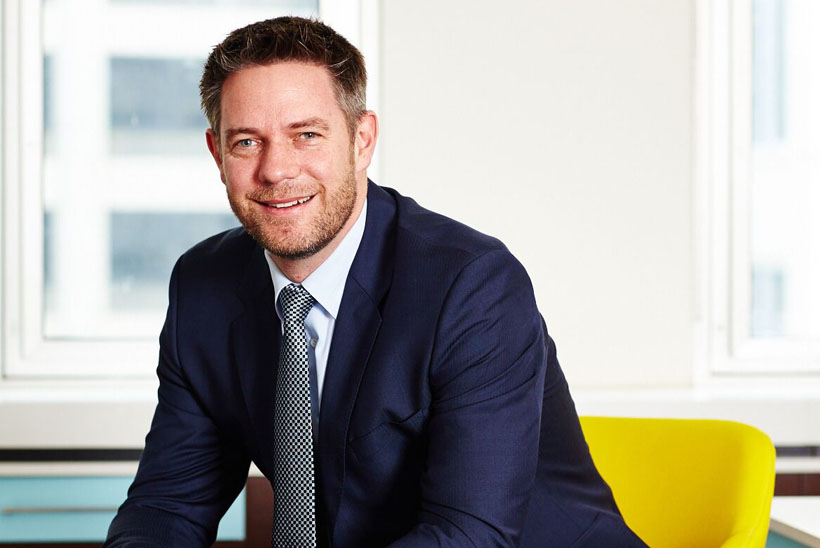
Hence the first part of the FinOps engine which focuses on INFORM. This allows organisations to assess cloud environments at an application layer, before aligning critical elements to demonstrate where spend is linked to cost centres or business owners.
Part of the blueprint is a responsibility matrix to provide context behind the ownership metrics and to outline the true definitions of each – “otherwise it’s just words on a piece of paper”.
“We had to ensure accountability because the FinOps practice itself is responsible for the well run,” King noted. “But the teams you are dealing with are accountable for the outcome but they can’t do it alone because of the need for subject matter experts – whether financial or technical within the organisation.”
The team at Infront has spent the past 12 months documenting every process, input and output to improve exception based management capabilities by highlighting what’s running well and what’s not.
Underpinning this is processes and tooling to identity issues, raise them up as a blip and then allow the FinOps team to engage and solve.
“But the reason why the blueprint is so important is because those KPIs and responsibilities are now contextual,” King added. “Now, if you’re responsible for A – this is what A means, this is the process, this is what you’re managing and this is what you’re measuring.”
As a result, an effective communication strategy is taking place which requires buy-in from all key stakeholders to change the culture of cloud through information.
Following INFORM is OPTIMISE.
Through CGaaS, organisations can start making changes if a deviation from best practice occurs – such as spending more money or architectural challenge points.
Completing the three-step approach is OPERATE.
“Many customers want to get on the DevOps journey and the whole idea of cloud is that everything is created by code,” King said. “When you extract information out of cloud, it’s extracted as code which is how we run compliance because the data is there. Therefore, deploying cloud is actually deploying by code as well.”
At the heart of CGaaS is a ‘crawl, walk, run’ maturity approach to performing cloud governance which enables organisations to start small, and grow in scale, scope and complexity as business value warrants the maturing of functional activity.
Targeting businesses that are either preparing to move to cloud or are already operating at scale, the offering is anchored on achieving a “disciplined, but pragmatic approach” to governance and compliance across multi-cloud environments.
“This is achieved by DevOps and a shift-left mindset,” King detailed. “When you shift left, you ensure code is created out of best practice, from approved patterns and is secure on deployment. Not a deployment in cloud which has security holes and requires teams to come back and fix retroactively.
“There’s a very specific set of maturity steps that businesses need to go through but no organisation is even getting the metadata right today.”
Buyer’s remorse or cloud contentment?
On the topic of cloud governance – whether in Australia or overseas – IT executives are spinning heads listening to a divided market.
A shoulder angel on one side, a shoulder devil on the other – both accessing thoughts and introducing ideas.
For some, infrastructure vendors represent a conscience exposing rising cloud costs. For others, it’s nothing more than ill-advised temptation to resist change regardless of the benefits.
“That’s a correct assessment,” King accepted. “The hyperscalers don’t believe there’s a problem but that’s because they get paid – particularly the sales reps – on consumption.
“We’ve been told by a former executive at Microsoft that no sales rep will ever sponsor or support our initiatives because we are focusing on the optimisation of cloud spend. And we’re a gold partner of Microsoft.”
According to King, the hyperscalers – whether that be Microsoft, Amazon Web Services (AWS) or Google Cloud – are playing the role of devil’s advocate to counter the work of Infront in this space.
“The line is, ‘you don’t need any third-party process or tooling because we do everything’,” King explained. “But the tooling isn’t fit for purpose. It’s not designed to provide the insights required to operate a well run cloud. It’s not in their interest or aligned to their incentives.”
The irony for King is that when Buttonwood Cloud Exchange was presented to customers almost 10 years ago, the product was branded as too mature for the market need. Notably, the offering was viewed as at least 3-4 years ahead of most environments.
“Because the concept was governance, best practice came after the event,” King said. “Everyone sprinted to the cloud but now, businesses want help solving the problems that this approach created.”
For example, CGaaS provides ISM compliance as part of the platform. In Federal Government and now more broadly across the public sector, approximately 107 technical controls exist that are required to be applied in cloud to secure environments.
The team at Infront built secure environments and landing zones for customers ensuring certification via third-party security consultants.
“Then on day one, we gave them the keys to the kingdom and they ran forward doing everything they needed to do,” King added. “If we went back to those customers today and asked, ‘are you still compliant?’ They wouldn’t have a clue because there’s no simple way of understanding, it’s a very technical and difficult problem statement.
“So we spent 12-14 months writing policy as code outcomes allowing organisations to take business risks, codify them and then raise them up as security posture problems within their environment.”
In a note of clarification, King was quick to stress that FinOps as a concept is not anchored in the need for cost savings – that is a small part of the overall approach.
“It’s about getting value for money in cloud,” King confirmed. “It’s not about throwing everything at cloud and then complaining about the bill.
“It’s about doing the migration well and then following strong practices to understand the risks and optimise costs. They might be simple actions but they are increasingly difficult to get on top of for businesses today.”
“CIOs understand that sustainability is here to stay, it’s no longer just a buzzword,” clarified Alison Matte, rubber-stamping a leading corporate objective irrespective of company or country.
In permeating the priority lists of boardrooms across the world, sustainability has seemingly passed the why test with flying colours. The market understands and acknowledges the importance of action – whether individually or collectively.
“We can all agree on that,” said Matte, speaking as Sustainability Lead of EcoStruxure IT at Schneider Electric.
“Government regulations are coming into force and certifications are becoming requirements for companies. Plus, the perception point of view whether that be from consumers and shareholders is important. So yes, sustainability is here to stay.”
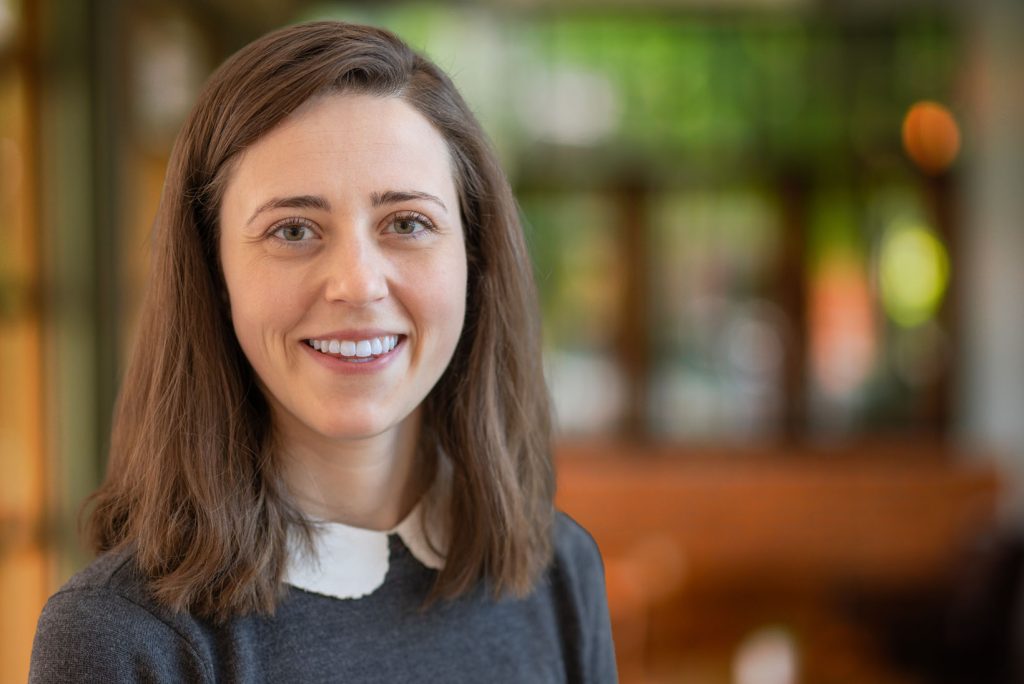
The key focus area – and by extension ongoing challenge – facing CIOs today from an environmental, social and governance (ESG) perspective is centred around who in the organisation reports what? And how granular can and must the reporting be?
“Committing to ESG is a positive step and most companies have policies and KPIs in place already which is encouraging,” Matte added. “But how granular can they go as a company?
“Where the CIO comes into play is around IT infrastructure. Very few companies don’t have IT infrastructure or IT assets in some form. For example, if you’re using emails or phones then you’re managing data and that data needs to be managed and computed somewhere – usually in local or distributed data centres.”
By 2027 – and according to Gartner – 80% of CIOs will have performance metrics tied to the sustainability of the IT organisation. For 25%, compensation will also be directly tied to the impact of sustainable technology.
“Whether owned or outsourced, at the end of the day, CIOs must know the IT footprint of their organisation,” Matte advised.
But this fundamental need isn’t entirely playing out in the numbers. Globally, less than half of executives (43%) are currently aware of their organisation’s IT footprint.
According to Capgemini findings, the level of awareness varies by sector – banking and consumer products show relatively higher levels of awareness, while industrial manufacturing displays the lowest level of awareness.
“That is low,” Matte assessed. “But it’s also a sign of change. If that question was asked five years ago, the number would have been lower. And if we ask it tomorrow, it most likely would increase.”
Delving deeper into the research, 50% of businesses have an enterprise-wide sustainability strategy but only 18% have a “comprehensive” sustainable IT strategy with well-defined goals and target timelines.
“CIOs are playing a role,” Matte added. “Yes, a cost exists but how can they break that down and how is that relevant to the sustainability KPIs of the company? These are the questions that companies and countries are starting to ask.”
Within the context of rising electricity demand and distributed IT environments changing the market landscape, Matte observed a dual role emerging for CIOs specific to sustainability.
Firstly, in the use of technology and analytics to help cut emissions by reducing, replacing and reusing IT infrastructure. Secondly, through the level of sustainability achieved with internal IT environments.
Citing the work of Elizabeth Hackenson – CIO at Schneider Electric – Matte outlined the importance of IT executives segmenting the task of sustainability into three core areas:
“There’s many factors in place,” Matte explained. “If we look at sustainability as a whole, there’s many stakeholders who have to report metrics and start monitoring. In the enterprise, many teams can exist and data isn’t always stored in one place.”
With multiple divisions tackling the issue, a reorganisational shift is required to ensure that information and data flows correctly to allow the company to first strategise, and then decarbonise.
“That’s why we put digitise in the middle,” Matte said.
“Sometimes a mismatch occurs with the strategise piece – companies have great commitments, want to do better and know what they need to do. They understand that decarbonising is the step to take but they lack the intermediate step of the next specific action to take.”
If organisations can digitise through software and solutions, Matte said the management and visualisation of data can be significantly enhanced in parallel. The aim is to improve visibility on where the data is originating but also the required methodology to better calculate reporting metrics.
“If you can understand that and use digital tools to create a baseline, then you can accelerate that and show progress,” Matte recommended.
Regardless of maturity, a positive introductory step for organisations is to simply ask: how can we become more sustainable? The next step is to break it down into bite-sized milestones.
“You can’t do everything at once, it’s impossible and takes time to transform,” Matte added.
“Businesses may have some elements set in place or they may not so it’s important to build in a little grace. A logical initial priority is to look at the regulations and assess what you actually have to do now.”

Executing a sustainable IT infrastructure strategy
Despite best intentions however, implementation challenges preventing the deployment of wide-scale sustainable IT centre around four common roadblocks for CIOs. Based on Capgemini findings, they rank as:
“Cost is a valid reason but it can be quite intimidating sometimes,” acknowledged Matte, referencing the importance of return on investment (ROI) in sustainability.
For Matte, businesses are chiefly committed to IT infrastructure being secure, resilient and sustainable. Security ranks first as the baseline because any connected asset must first be protected, before becoming resilient and then sustainable.
“Trade-off tools help conceptualise ideas and one tool that we have is an ROI calculator,” Matte expanded. “The aim is to bridge the gap between all three because how much do organisations value cyber security?
“And how much do they value resiliency? Unfortunately, no country is immune to natural disasters. Then sustainability, what price do you put on that? An ROI calculator can also show other benefits from the implementation of new technologies.”
In a direct address to CIOs, Matte directed executive attention to a three-step framework designed to measure and track IT energy consumption across the entire enterprise IT portfolio.
The recommendation is to start small by focusing on power usage effectiveness (PUE) and then build up the metrics monitored following a comprehensive IT infrastructure audit.
“Start by measuring one metric,” Matte said. “For example, if you’re an IT manager, demonstrate how you can reduce the company’s electricity bill by X amount because of optimisation and recommendations via software. That will transfer into ROI quite fast.”
Then focus can shift into measuring other key metrics within the organisation, underpinned by offerings such as EcoStruxure IT.
The DCIM software enables owners and operators to measure and report data centre performance based on historical data and trends analysis, combined with artificial intelligence (AI) and real-time monitoring.
Supported by a new download function, organisations can now quantify and report at speed to remove “laborious manual tasks” while improving the ability to “harness the power of data”.
“When seeking to reduce IT and data centre energy consumption and CO2 emissions, organisations must establish a fact-based baseline, and access to real-time and historical data is vital,” Hackenson added.
“Through the use of EcoStruxure IT, we have continued to make significant progress in our mission to reduce our IT energy consumption and environmental impact, and to help the company progress its sustainability objectives.”
Aligned to the vendor’s sustainability commitments – publicly shared via Schneider Sustainability Impact (SSIs) in 2021 – Hackenson kick-started a Green IT program to identify “new and intelligent” decarbonisation pathways to achieve at least a 5% annual IT emissions reduction.
As part of the program, Schneider Electric utilised its EcoStruxure IT software, which was deployed across more than 140 key sites globally to improve resiliency and security of its IT operations.
By utilising the insights gathered from the software, the vendor was able to witness a 30% energy consumption reduction in H2 ’23 versus H1 ’23 in its smart factory located in Lexington, Kentucky (USA).
“We focused on making this available across the globe, for customers running on-premises and cloud environments,” Matte added. “The aim was to make this an out-of-the-box offering which includes sustainability dashboard capabilities.”
Also available via the channel partner ecosystem to either resell or manage on behalf of end-users, the new version of EcoStruxure IT is anchored in an ability to automate and model data based on PUE reporting.
Through DCIM 3.0, the solution is positioned as a “critical part” of Schneider Electric’s overall sustainability tool set, connecting IT to an enterprise-wide sustainability dashboard and software platform.
“We’re always learning from the usage of our software and are continually trying to make the experience better for customers and partners,” Matte added. “We are committed to making this as channel-friendly as possible.”
As more companies prepare for upcoming regulations – which mandates the reporting of IT and data centre energy consumption – Matte said the significance of accessing real-time, primary data becomes even more critical.
Through the launch of the new AI-driven dashboard and reporting capabilities in EcoStruxure IT across international regions, customers can quickly leverage data to comply with the new regulatory requirements.
“AI has two impacts on sustainability,” Matte added. “There’s an impact on the environment caused by AI but there’s also the impact of using AI to be more sustainable. How can we find the right balance between both?”
Australian businesses have long been targeted by bad actors – compounded by an expanding attack surface area and rapid spike in highly sophisticated breaches.
That is a well-established narrative within the corridors of corporate power yet despite such acknowledgement, organisations remain out of step on cyber security.
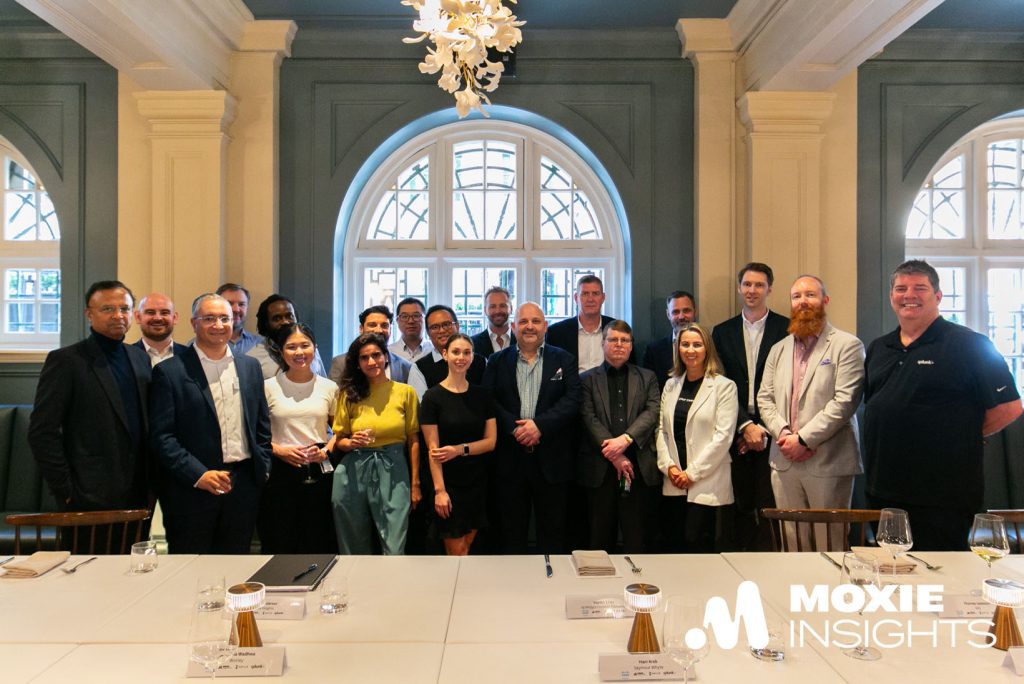
Challenges centre on sub-standard threat prevention, detection, investigation and response capabilities, with a lack of visibility across cloud, network and endpoint environments. In response, organisations are building integrated observability strategies to bolster security, leverage automation and improve digital experiences.
This Executive Roundtable – in association with Moxie Insights, Cisco Security, Natilik and Splunk – assessed the role of observability in strengthening business defences and mitigating cyber risk.
Key discussion points included:
View Moxie Insights – Executive Roundtable in photos:
Inform your opinion with executive guidance, in-depth analysis and business commentary.